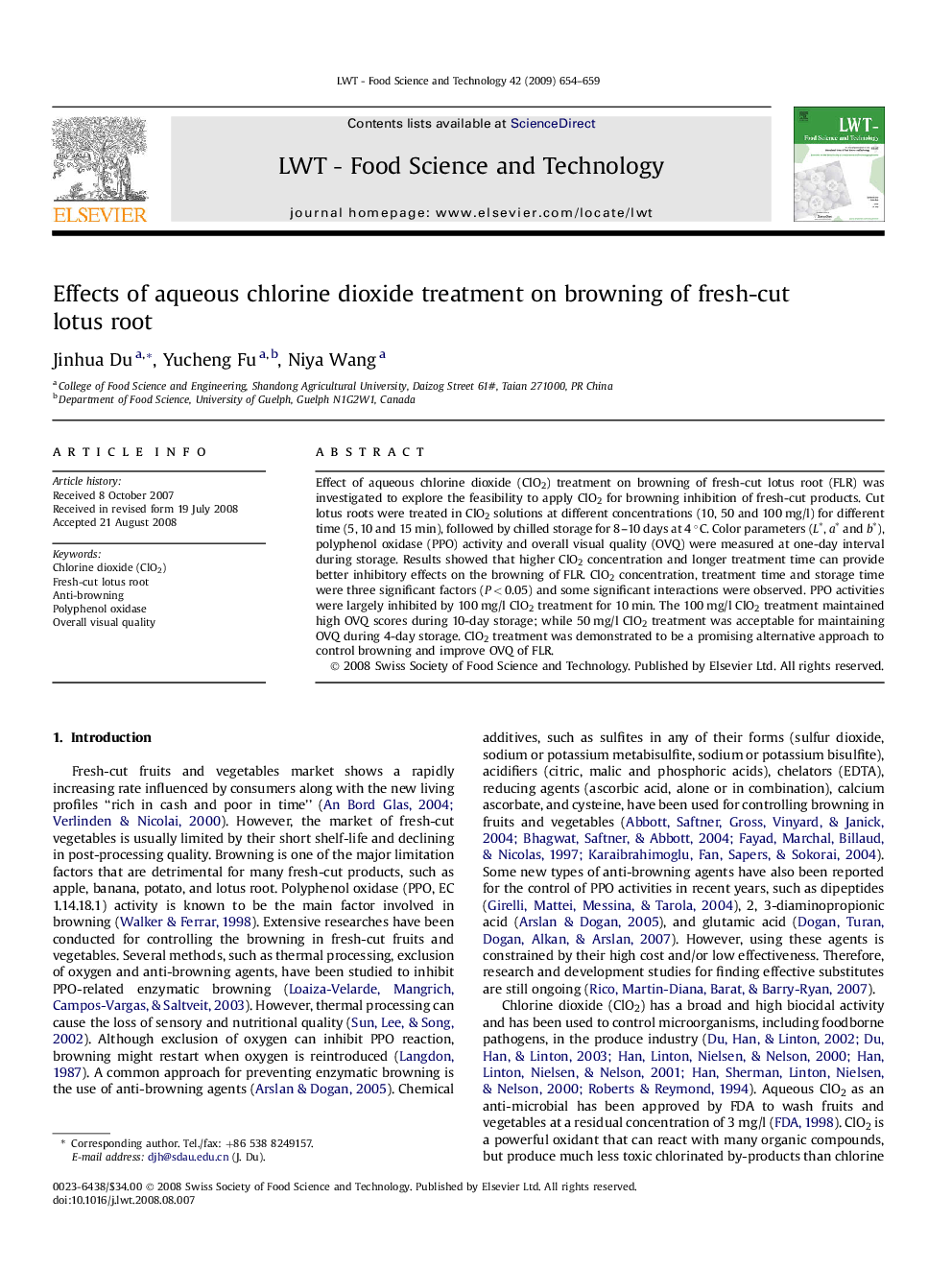| Article ID | Journal | Published Year | Pages | File Type |
|---|---|---|---|---|
| 4564566 | LWT - Food Science and Technology | 2009 | 6 Pages |
Abstract
Effect of aqueous chlorine dioxide (ClO2) treatment on browning of fresh-cut lotus root (FLR) was investigated to explore the feasibility to apply ClO2 for browning inhibition of fresh-cut products. Cut lotus roots were treated in ClO2 solutions at different concentrations (10, 50 and 100 mg/l) for different time (5, 10 and 15 min), followed by chilled storage for 8-10 days at 4 °C. Color parameters (Lâ, aâ and bâ), polyphenol oxidase (PPO) activity and overall visual quality (OVQ) were measured at one-day interval during storage. Results showed that higher ClO2 concentration and longer treatment time can provide better inhibitory effects on the browning of FLR. ClO2 concentration, treatment time and storage time were three significant factors (P < 0.05) and some significant interactions were observed. PPO activities were largely inhibited by 100 mg/l ClO2 treatment for 10 min. The 100 mg/l ClO2 treatment maintained high OVQ scores during 10-day storage; while 50 mg/l ClO2 treatment was acceptable for maintaining OVQ during 4-day storage. ClO2 treatment was demonstrated to be a promising alternative approach to control browning and improve OVQ of FLR.
Related Topics
Life Sciences
Agricultural and Biological Sciences
Food Science
Authors
Jinhua Du, Yucheng Fu, Niya Wang,
